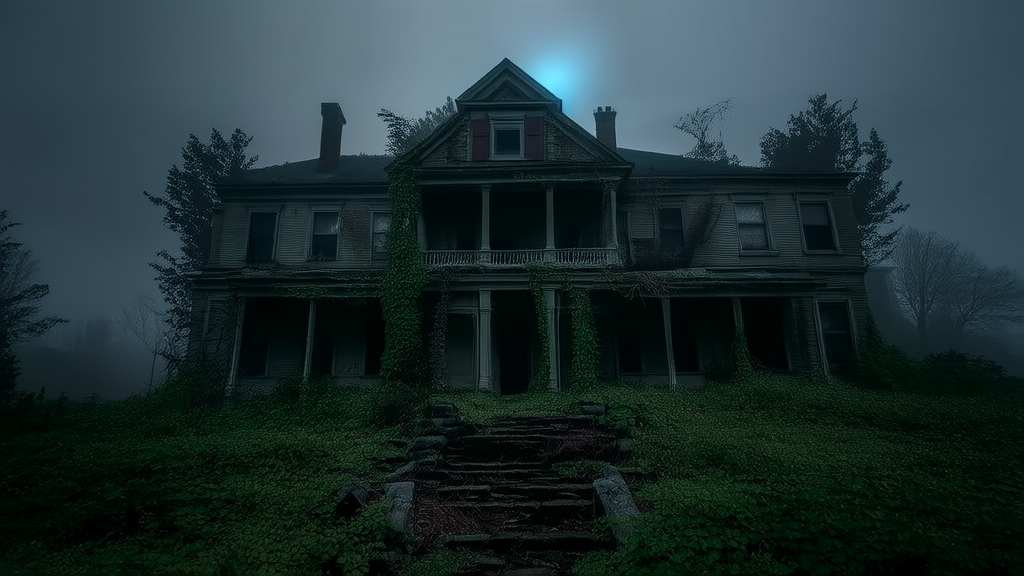🔮 Weird Tales & Urban Legends
The Whispering Walls of the Forgotten House and the Boy Who Never Returned

The old building stood at the edge of town, its windows dark and unyielding, like the eyes of a long-dead creature. It had been abandoned for over thirty years, yet no one dared to approach it. Locals whispered that it was cursed, that those who entered never returned. But the truth was far more subtle than any legend.
It began with a boy named Elias. He was twelve, curious, and always looking for something new. One summer afternoon, he found himself wandering near the forgotten structure, drawn by an inexplicable pull. The air around it felt heavier, as if the very atmosphere resisted his presence. He hesitated at the gate, which creaked open without a sound, as though the building itself had invited him in.
Inside, the silence was thick. Dust motes floated in the slanted light from broken windows, and the floorboards groaned beneath his steps. The walls were covered in peeling wallpaper, faded patterns of roses and ivy that seemed to shift when he wasn’t looking. He moved cautiously, his breath shallow, as if afraid to disturb the stillness.
In the main hall, there was a grand staircase leading upward, its banister carved with intricate designs that looked almost organic. At the top, a door stood slightly ajar. Elias reached for it, but before he could touch the handle, a soft whisper echoed through the hallway. It wasn’t loud, but it was clear—*“Don’t go in.”*
He froze. The voice had come from nowhere, yet it felt familiar, as if it had been waiting for him. He turned back, but the way he came was gone, replaced by a narrow corridor that hadn’t been there before. Panic crept into his chest, but he forced himself to stay calm. He stepped forward, not knowing where the path would lead.
The corridor opened into a large room filled with dusty furniture, as if time had stopped mid-occupation. A desk sat in the center, covered in yellowed papers and inkwells. A clock on the wall ticked backward. Elias approached, fascinated despite the unease curling in his stomach. As he reached out to touch the desk, the papers fluttered as if caught in an invisible wind.
Suddenly, the room shifted. The walls stretched, the ceiling dipped, and the air grew colder. Shadows danced along the corners, forming shapes that flickered between human and something else. Elias stumbled back, heart pounding, and the room snapped back to normal. The clock was now ticking forward again, and the papers lay still once more.
He ran, not caring where he went. The building twisted around him, corridors changing, staircases leading to places that didn’t make sense. Finally, he found a window and climbed out, collapsing onto the grass outside. His legs trembled, and he stared back at the building, now silent and still, as if it had never been alive.
The next day, Elias told no one what he had seen. But the building didn’t forget him. Every night, he dreamed of the same place—of whispers, shifting walls, and a door that always waited just out of reach. He tried to avoid it, but the dreams became stronger, pulling him back, as if the building had claimed him.
One morning, he woke up with a strange symbol carved into his palm—a spiral with three points, exactly like the one on the door. He tried to scrub it off, but it wouldn’t fade. The townspeople noticed his change, how he became distant, lost in thought. Some said he was haunted, others said he had gone mad.
But the truth was stranger still. The building had chosen him, not to scare, but to remember. It had been built by a man who believed in eternal memory, a place where stories could live forever. The whispers were not warnings, but echoes of those who had come before—each leaving a piece of themselves behind.
And Elias, unknowingly, had become part of that story. He didn’t know if he would ever escape the building’s grasp, or if it had already taken root inside him. All he knew was that the door was still open, waiting for someone else to step through.
Published on en
🔗
Related Sites
- AI Blog — AI trends and tech news